I took photos with the purpose of writing this blog in September 2017, and then everything got too busy and I didn’t manage to actually write it. But here it is finally, so late that the subject matter has effectively come back into fashion once again! All the photos below are from last year (or earlier), rather than this year however.
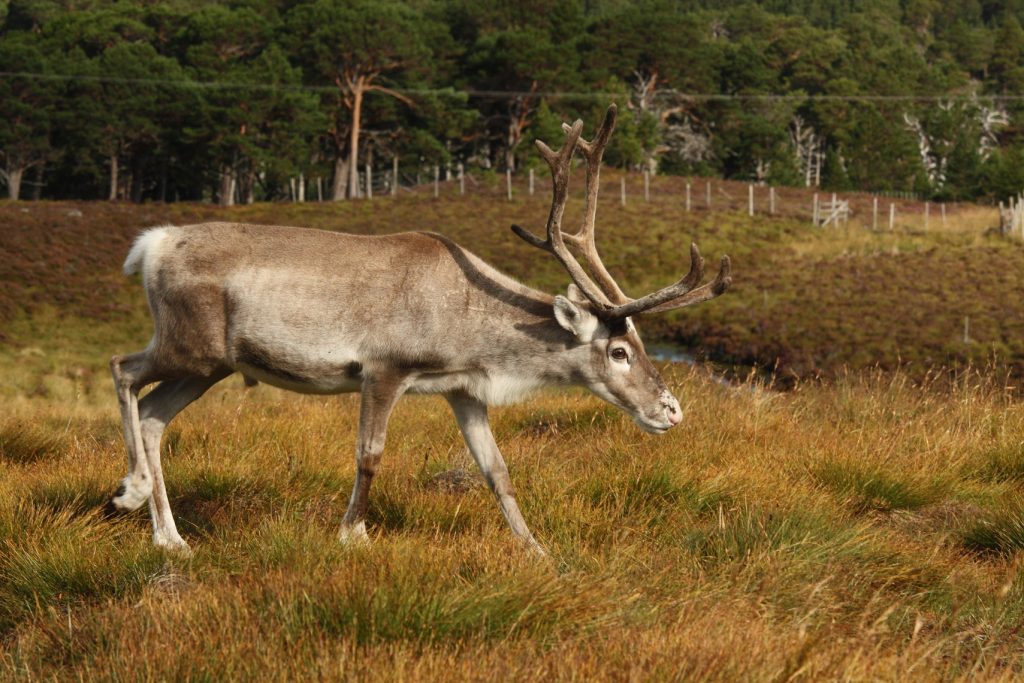
Reindeer antler is made of bone, and bone needs a blood supply for it to grow. Antlers start growing in the spring and at this point the soft, growing bone is covered with a layer of ‘velvet’ – a thin, hair-covered skin which is full of blood vessels and nerves. Late August and September are the months when reindeer finish growing their antlers each year, the bone hardens up, and then the ‘velvet’ skin strips away. Now, this can be a bit of a gory affair if you don’t know what to expect, so read on with caution if inclined to be a little squeamish. Although depending on what size of computer or phone screen you’re reading this on… it might be too late already. Sorry.
I could write all day about antlers, but to cut a long story short (for now at least), the antlers reach full grown at the end of the summer and then the bone hardens up, and finally the blood supply to them cuts off right at the base. This means that the velvet skin is effectively then just dead tissue, and that dead tissue needs to come away. You can’t be a big scary bull during the breeding season if you have cute fluffy antlers on your head…
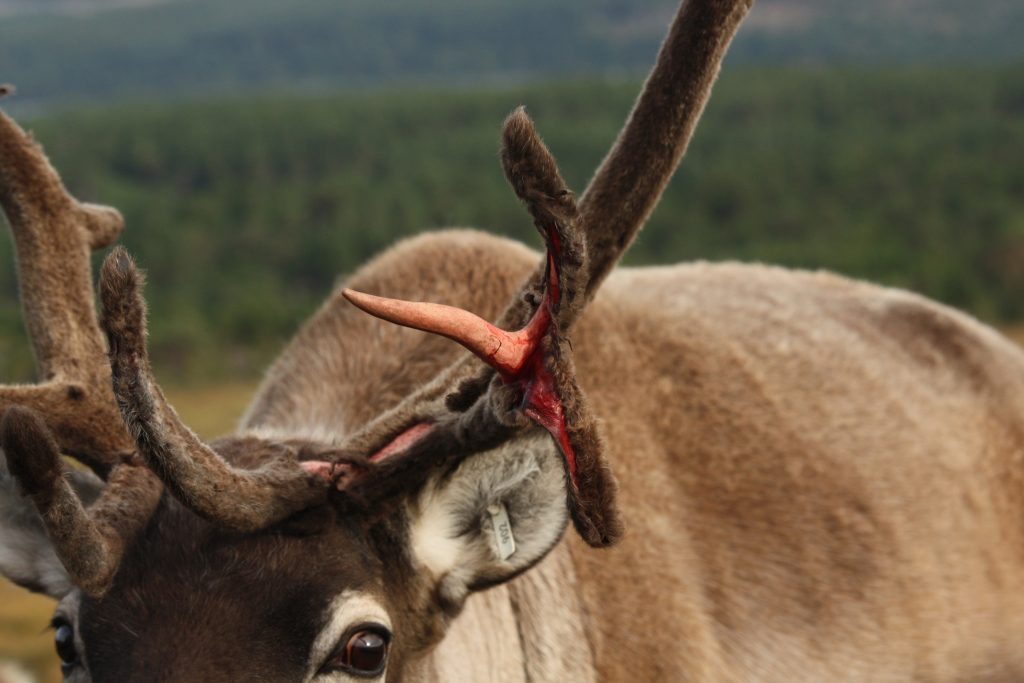
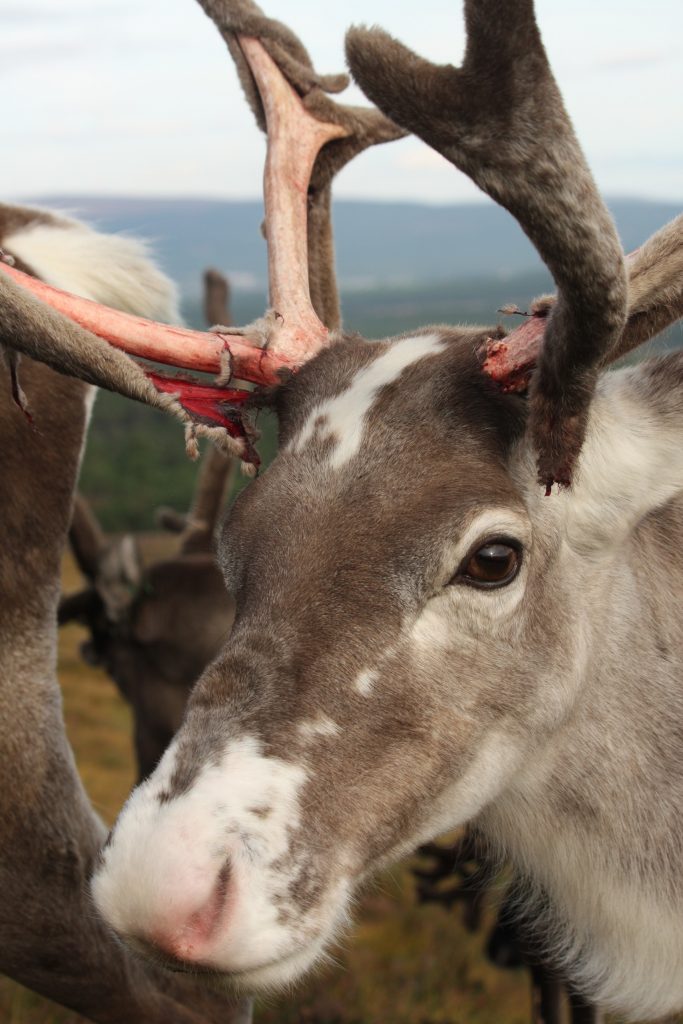
The first reindeer to ‘strip’ their velvet each year are the mature bulls, starting at the end of August. They are followed but the younger bulls in early September, and then the cows will strips their throughout the rest of September and into October. The castrated males, or ‘Christmas reindeer’ as we call them, are slightly different as they no longer have a hormonal trigger to strip the velvet away as their hormone balance has changed. They do still strip their velvet, but slowly and over the course of months as opposed to the space of a couple of days.
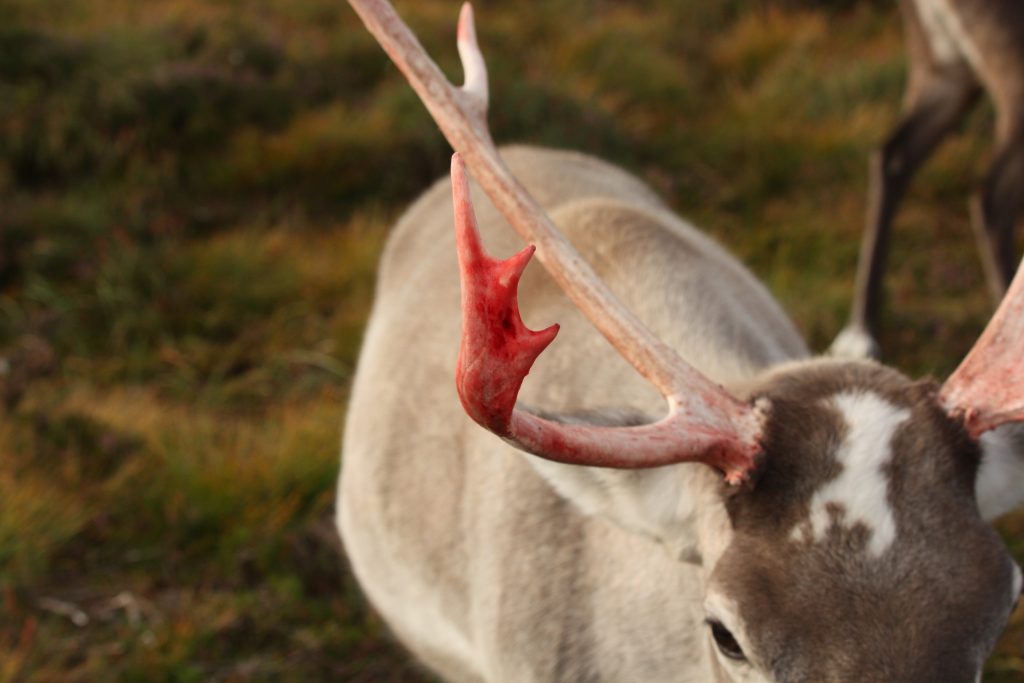
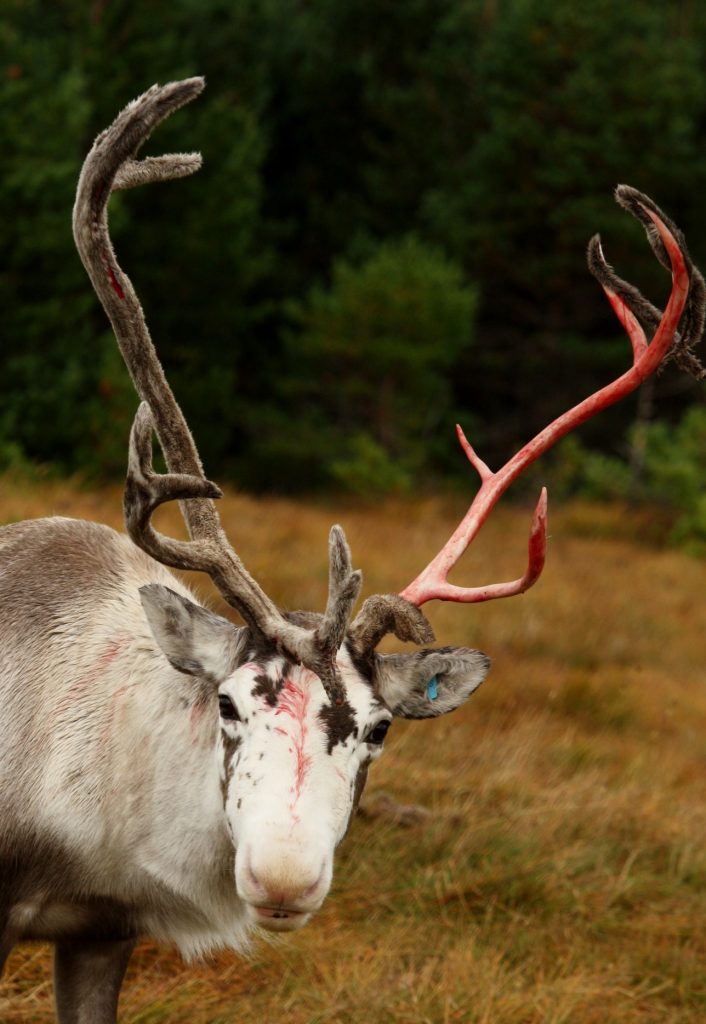
Although the blood supply to the velvet has cut off, there is still residual blood remaining in the blood vessels of the velvet, so stripping can be a gruesome affair at times. There is no feeling left in the antlers by this point however so it is completely painless, and this is a fact we have to drum into to all visitors before they come face to face with a reindeer whose skin appears to be falling off! It’s not a good look. But for those visitors who are feeling brave, I take great delight in showing them a section of freshly stripped velvet as the blood vessels are visible, making it easier to explain the process of the antler’s growth. I find kids are generally well impressed and want to poke at the bloody skin, whereas adults are often a little grossed-out and not keen to touch!
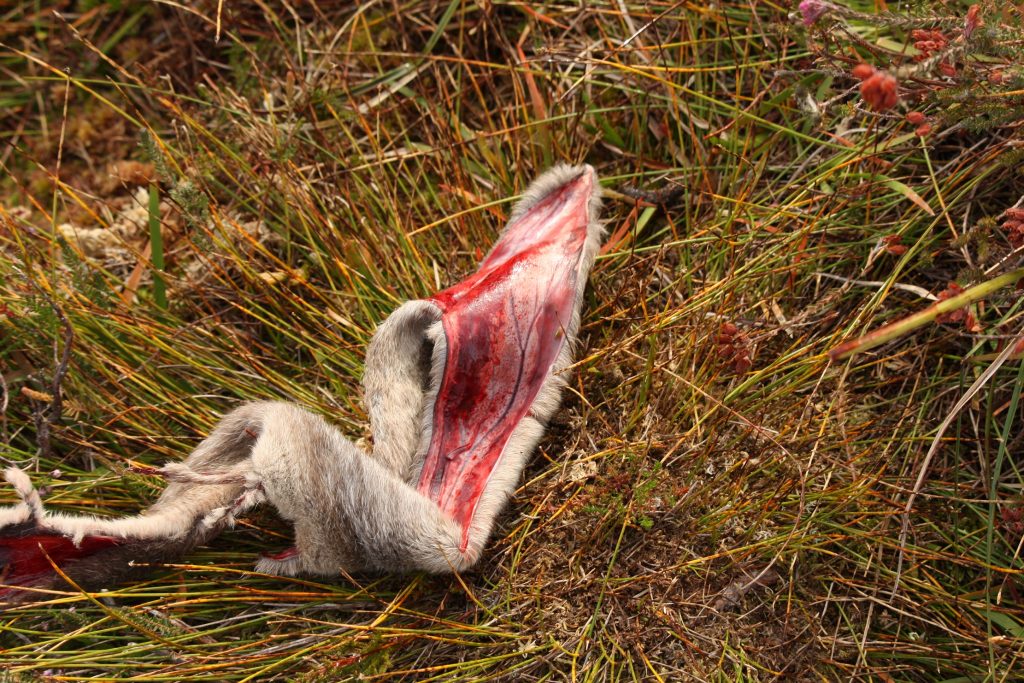
Once the antlers are clean of velvet, they tend to be a bit red-tinted from the blood until there’s been a rain shower, and then they are a more normal, ‘bone’ colour. And then it’s time for all hell to break loose, as the young bulls start squaring up to each other and the big bulls have to be separated from the herd for the safety of the visitors each day, until they can be split up and moved to closed off sections of the hill enclosure with a group of females apiece. The rut has arrived!
Hen
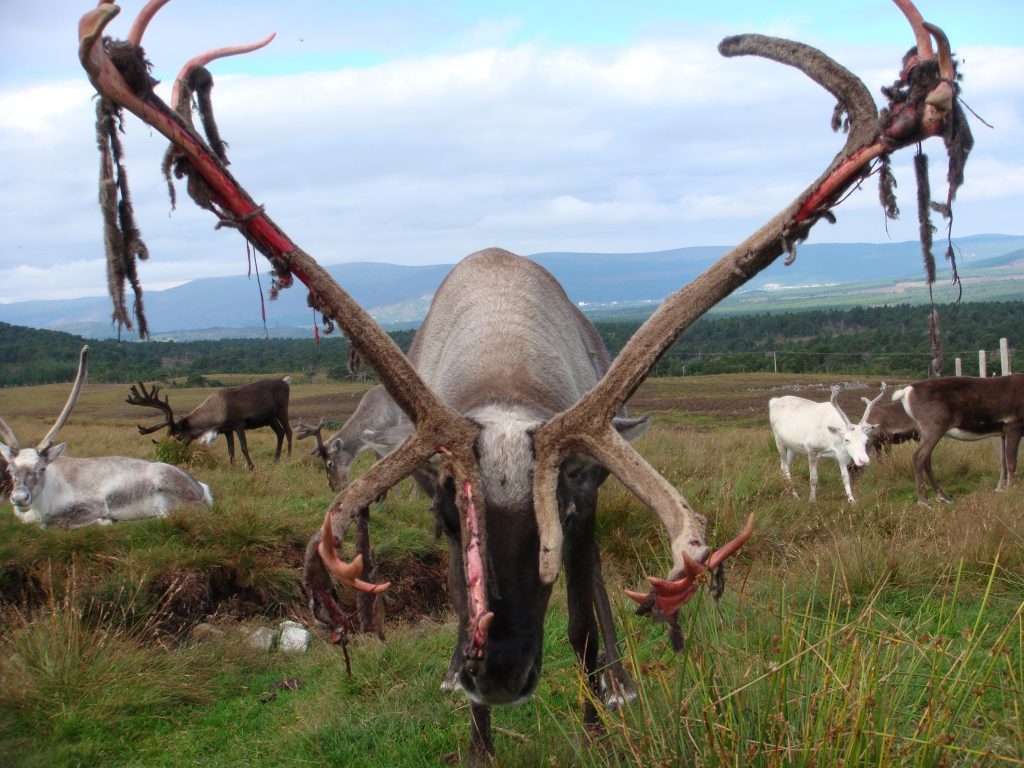
Reindeer bull Moskki stripping his velvet

I never would have known about this.
I knew from my last visit the antlers were very sensitive in velvet but didn’t realise they had to do this.
Oh my I never knew this ❤️